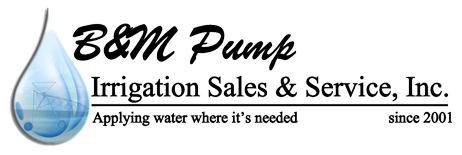Information About the Irrigation and Growth Stages of the Peanut Plant
Peanuts offer plenty of challenges to growers across the United States, but there is no doubt that they are a highly profitable crop. While Georgia and the Southeast in general are known for their peanut production, there are growers in the Southwestern United States that have also taken to the plant. All of them must know the type of role irrigation plays in the production of the plant.
One cannot always rely on rainfall to provide the consistency and control of water to achieve the highest quality crop, especially in the Southwest. It is important to understand each growth stage of the peanut plant and how those stages differ in their irrigation needs if you are to achieve the highest possible yield potential.
Here is some information from our irrigation system company in the Southwest US about the growth stages of the peanut plant and their effects on the irrigation practices used by growers:
- Pre-bloom and bloom:
Before peanut seeds can start to germinate, they need to absorb about 50 percent of their weight in water. This means it’s crucial to keep the soil moist after planting and before blooms. Once germination occurs, growth will last for approximately 25 to 40 days, with blooms appearing afterward. When the blooms finally show up, this is a sign that the plant has grown to its reproductive phase. A lack of water during these stages leading up to bloom can delay the formation of flowers, or completely inhibit blooming altogether in more severe circumstances. - Pegging and pod set:
This period also requires steady irrigation to maintain soil moisture and to keep the temperature of the soil low. Proper moisture is required for the pegs to be able to penetrate down into the soil. This moisture also improves the calcium uptake that is required for pod filling in the peanut plants. - Kernel fill and maturity:
After about 105 days since planting, there will be limited growth. At this point, you do not need to provide the peanut crop with quite as much water, though irrigation may still be needed here and there, if only to prevent the development of spider mites and certain fungi that can cause contamination of the crop.
The amount of water used at varying stages of the peanut plant’s growth process really varies depending on your location and rainfall. In fact, many farmers use very rough estimates in their irrigation schedules—it’s not always an exact science. In Georgia, peanut farmers can assume an average seasonal requirement of 23 inches of irrigation, and if there is significant rainfall, they subtract the rainfall received from their weekly watering.
But in Texas and the Southwest, which are dryer, many peanut producers must irrigate much more frequently to be able to keep the soil sufficiently moist.
B&M Pump Irrigation Sales & Service, Inc. is a longtime irrigation system company in the Southwest US. For more information about the growth phases of the peanut plant and how irrigation plays a role, reach out to our experts today!
Categorised in: Irrigation
